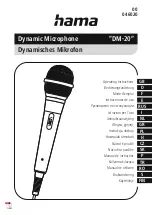
Carlson Wireless USA revision 1.05 Page 10
(4) Rough alignment.
This is usually easier then it would seem. Since it is a
prerequisite that you have line of sight between the two points, here are sev-
eral ideas that have worked for installers:
(1) If you can see the other unit, simply aim the tubes towards each other. (2)
During midday, use a large mirror to create a bright reflection approximately
towards the other site while someone watches for the flash.
(3) Plot out the path on a topo map and set the antennas using a compass.
How close in alignment do they need to be?
+/- 10 degrees will be ade-
quate for most paths using the 13.5 dB gain antenna. Certain paths that have
a low fade margin may require a more accurate setting.
Final alignment.
This is usually done by connecting a standard cordless
phone to the FXS or FXO end, and then give a best guess to the direction,
establish a connection and rotating the antennas both right and left noting the
points where the signal disappears, (assuming that it does) and then center-
ing them between those cutoff points.
Remember to leave the antenna elements vertical, or perpendicular to
the ground for best performance
Carlson Wireless USA revision 1.05 Page 11
TROUBLESHOOTING
The outcome of the installation is dependent on the weakest link.
Five things are paramount to his system working well:
(1) An acceptable radio path
(2) Other users of the 2.4 GHz ISM band.
(3) Customer’s wiring of power and telephone circuits
(4) Antenna alignment /- 10 degrees for i-WLL-15
(5) Quality of the telephone lines from the telephone company
(6) Quality of the power supplies.
If the system appears dead, with no tones audible on the subscriber phone,
look for a wiring fault. You can test for loop voltage at the FXS end by meas-
uring the voltage on line 1 and line 2. Each should be 30 VDC. Next would be
checking the DC current used by each unit. For example the sub unit with 16
Volts provided should draw (3W / 16V) ~200 mA. at idle and ~400 mA with
both lines off hook. This test is very useful to prove out the wiring.
Next, it will be important to confirm that a local test at the FXO base site was
done. If not, you will need to bring the FXS unit back to the base site and
temporarily connect the FXS unit up and confirm proper local operation.
If the system cuts in and out, or fails to draw dial tone, look for an alignment
problem or path obstruction. Also you should check to see that the antenna
elements are vertical to earth, and if not in a rural area you may have a con-
gested frequency band.
If you are having cross-talk between lines, examine the phone cabling making
sure it is individually twisted pairs, preferably with a Category 5 rating.
Software Updates: Inappropriate operations (bugs) reported by users will be
evaluated by the engineering department. Fixes will be available from our web
site with instructions
If after checking the above, you are still having problems please contact our
sales dept. for technical assistance by phone or email.
A note about the
power supplies: The FXO unit will draw 2-3W off hook or idle. The sub will
draw 3W idle and 6W with both lines off hook. We suggest over-sizing the
supplies by 2 times. For example a 12 volt filtered DC wall transformer supply
@ 1.00 Amp (12W) or even better a 24 volt filtered DC @ 500 mA. (12W).
They are much more likely to survive power fluctuations and high tempera-






































